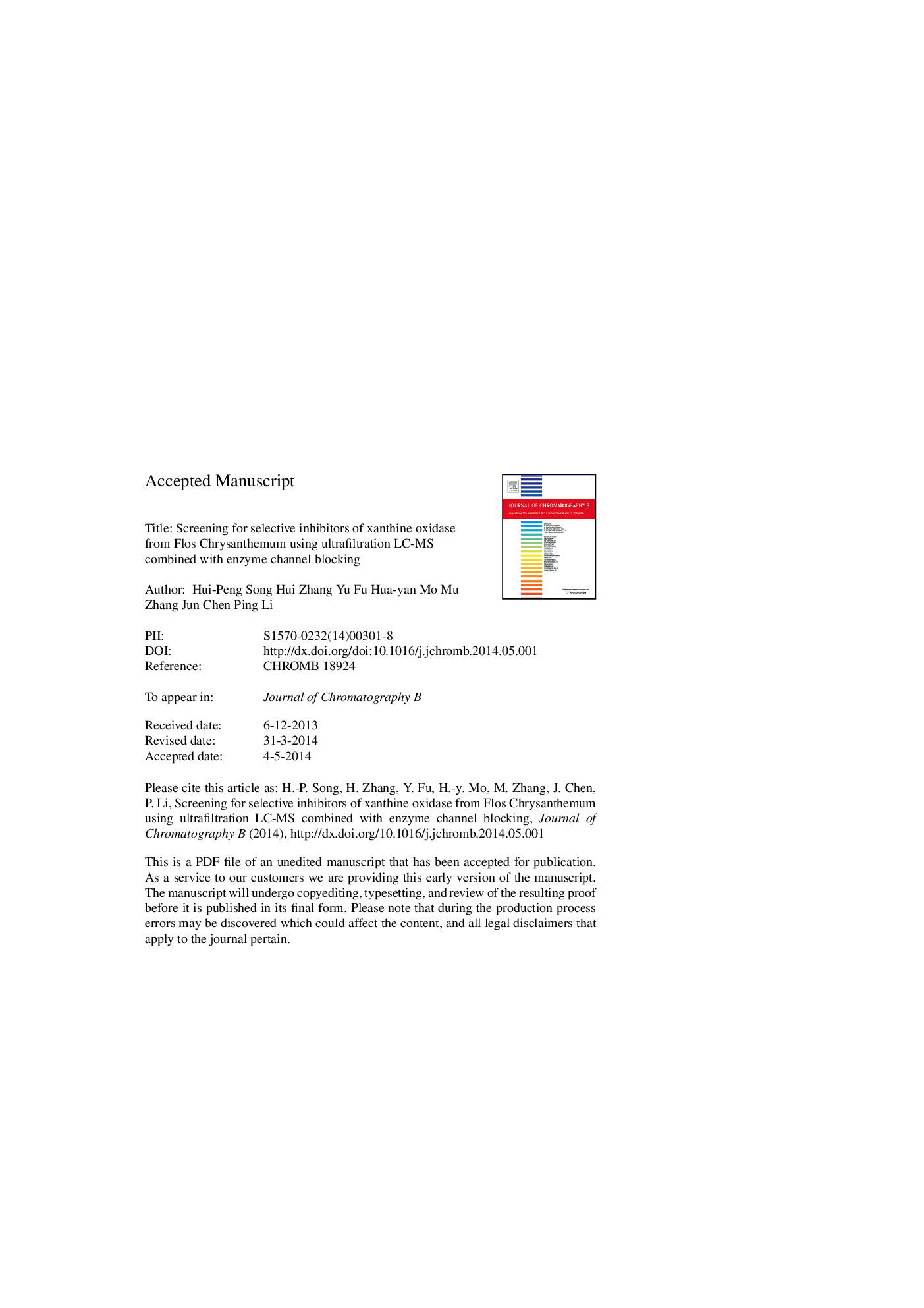| Article ID | Journal | Published Year | Pages | File Type |
|---|---|---|---|---|
| 7617713 | Journal of Chromatography B | 2014 | 27 Pages |
Abstract
In this study, a new method based on ultrafiltration liquid chromatography-mass spectrometry (UF-LC-MS) combined with enzyme channel blocking (ECB) was developed to discover bioactive components from herbal medicines. Xanthine oxidase (XOD), a critical enzyme for treating gout, was employed as the target protein for screening. By comparing chromatographic profiles of the compounds binding to XOD before and after the ECB experiment, the selective ligands could be distinguished from the non-selective binders. In this experiment, febuxostat bound to the channel entering into the active site of the enzyme and prevented potential ligands from binding. Finally, four compounds, namely, luteolin-7-O-glucoside, apigenin-7-O-glucoside, luteolin and apigenin were screened and identified as the candidate XOD inhibitors based on the ultrafiltration chromatogram of Flos Chrysanthemum, a famous traditional Chinese medicine used in many prescriptions for gout treatment. To verify the compounds screened further, a microplate method was applied to evaluate their enzyme inhibitory activities. The IC50 values of the above 4 compounds were 23.61, 38.80, 1.54 and 1.96 μM, respectively. The structure-function relationship was also estimated according to the in vitro assay. The results were in favor of the hypothesis that the Flos Chrysanthemum extract might be used for gout treatment by inhibiting XOD.
Related Topics
Physical Sciences and Engineering
Chemistry
Analytical Chemistry
Authors
Hui-Peng Song, Hui Zhang, Yu Fu, Hua-yan Mo, Mu Zhang, Jun Chen, Ping Li,
